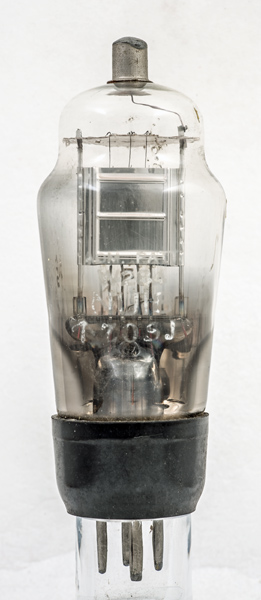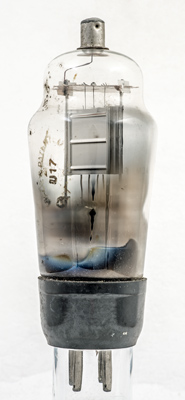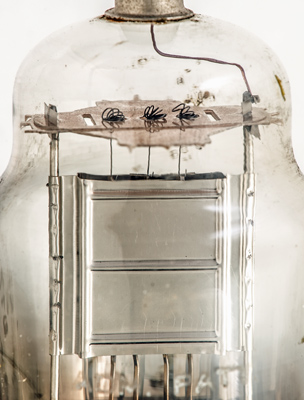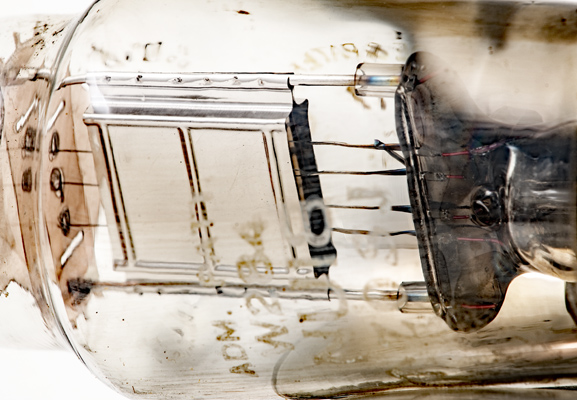|
NU18Sensibly equivalent¶ to:See also:
|
|
|

|
The UK Navy NU18 is an EHT rectifier and suited to providing the anode voltages in CRT based circuits. An oscilloscope, or early radar display, CRT normally has electrostatic deflection plates which, especially in older designs, required quite large signal swings (+ hundreds of volts) in order to achieve deflections up to + a diameter. It was therefore necessary to provide horizontal and vertical deflection amplifiers capable of very large output voltage swings and this in turn would mean that the deflection amplifiers would require special valves operating from an anode supply of, perhaps, 1,500 V. Additionally, potentiometer chains consuming several mA would be needed to move the zero trace up and down the screen.Since the deflection sensitivity of an electrostatically-deflected CRT varies according to the EHT voltage applied to it, it was essential to use the same rectified supply for the deflection circuits as for the EHT applied to the CRT itself. Thus, the EHT rectifier must supply enough current for two deflection amplifiers and two potentiometer chains in addition to the cathode current of the CRT. With this in mind it can be appreciated that the rectified current rating (30 mA) of the U17 was by no means excessive.The reservoir capacitor can be 1 µF. The normal current for a CRT power supply would be less than 5 mA.
The M-OV etched elliptical identification showing the commercial designation of U17.
As heater-cathode insulation would have posed design problems, the valve is directly heated. The filament passes six times through the anode cavity as a continuous tape making the shape of three inverted V's. 
The bright box anode and base connections to the filament.The classic envelope is 49 mm in diameter and, excluding the B4 base pins, is 121 mm tall.References: Data-sheet & 1040. |
Pin Connections
| 1 | 2 | 3 | 4 | tc |  nc | nc | f | f | a |
|
|
Absolute Maximum Operating Conditions¶
| Vh | Ah | Va | mAa | 
| 4.0 | 1 | 2500 | 30 |
|
Updated January 05, 2022.
|
|